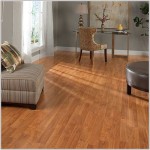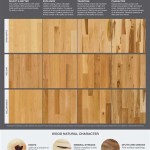Does Vinyl Flooring Give Off Fumes?
Vinyl flooring, known for its durability and versatility, has become increasingly popular in residential and commercial spaces. However, concerns have been raised about the potential release of fumes from vinyl flooring, particularly during and shortly after installation. Understanding the facts about these fumes is crucial for making informed decisions regarding the use of vinyl flooring.
Understanding Fumes in Vinyl Flooring
Vinyl flooring is primarily composed of polyvinyl chloride (PVC), a type of plastic material. During manufacturing and installation, certain chemicals, including volatile organic compounds (VOCs), may be released. VOCs are gases that can evaporate at room temperature and have varying effects on human health.
The VOC levels emitted by vinyl flooring vary depending on factors such as the type of flooring, installation methods, and ventilation conditions. Some studies have shown that newly installed vinyl flooring can release VOCs, such as styrene, ethylbenzene, and formaldehyde, at levels exceeding recommended indoor air quality standards.
Health Concerns
Exposure to VOCs can cause a range of health effects, including: * Eye irritation * Headaches * Respiratory issues * Nausea * Skin irritation
In severe cases, prolonged exposure to high levels of VOCs can lead to more serious health problems such as asthma, cancer, and reproductive issues.
Mitigation Strategies
To minimize the potential health risks associated with fumes from vinyl flooring, it is important to follow proper installation practices and ensure adequate ventilation.
* Choose Low-VOC Vinyl Flooring: Opt for vinyl flooring certified by reputable organizations, such as GreenGuard or FloorScore, indicating reduced VOC emissions. * Ventilate During Installation: Keep windows and doors open during and after installation to allow for proper ventilation and dissipation of fumes. * Allow for Curing Time: Avoid using the room immediately after installation and allow sufficient time for the flooring to fully cure and release any residual fumes. * Use Air Purifiers: Employ air purifiers with activated carbon filters to help remove VOCs from the air. * Monitor Indoor Air Quality: Consider using indoor air quality monitors to measure VOC levels and ensure they are within safe limits.Conclusion
While vinyl flooring may emit fumes during and after installation, understanding the potential health risks and following proper mitigation strategies can help minimize exposure to these fumes. By choosing low-VOC vinyl flooring, ventilating the installation area, and allowing for adequate curing time, you can enjoy the benefits of vinyl flooring with reduced concerns about its potential health impacts.

The Ultimate Guide To Non Toxic Flooring Atkinson Kirby
The Ultimate Guide To Non Toxic Flooring Atkinson Kirby

Toxic Flooring Can Be A Threat To Your Home Labor S Blog

The Features Of Smoked Floors Atkinson Kirby

What Is Low Voc Flooring It As Safe Non Toxic Easiklip Floors
Non Toxic Vinyl Plank Flooring Brands The Risks My Chemical Free House

Is Vinyl Flooring Resistant To Fire 50floor
Non Toxic Vinyl Plank Flooring Brands The Risks My Chemical Free House

The Ultimate Guide To Non Toxic Flooring Atkinson Kirby

Vinyl Flooring And Floor Tiles The 8 Pros Cons
Related Posts








